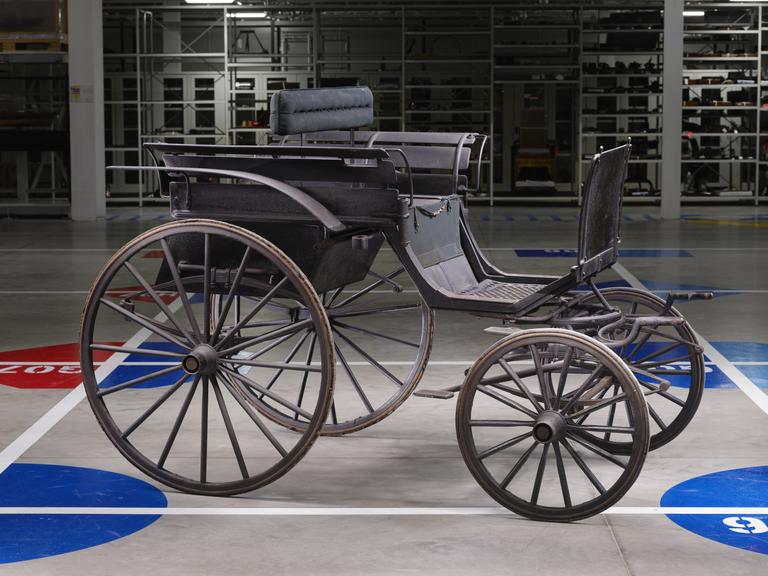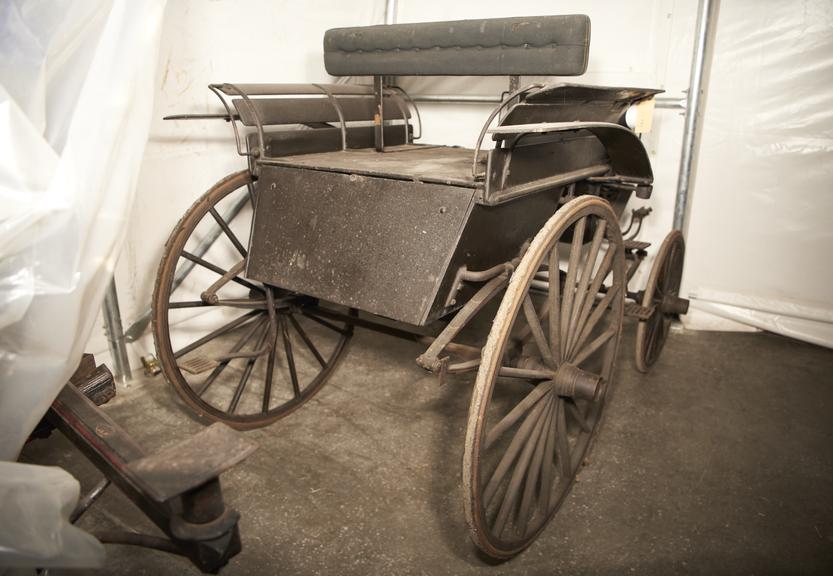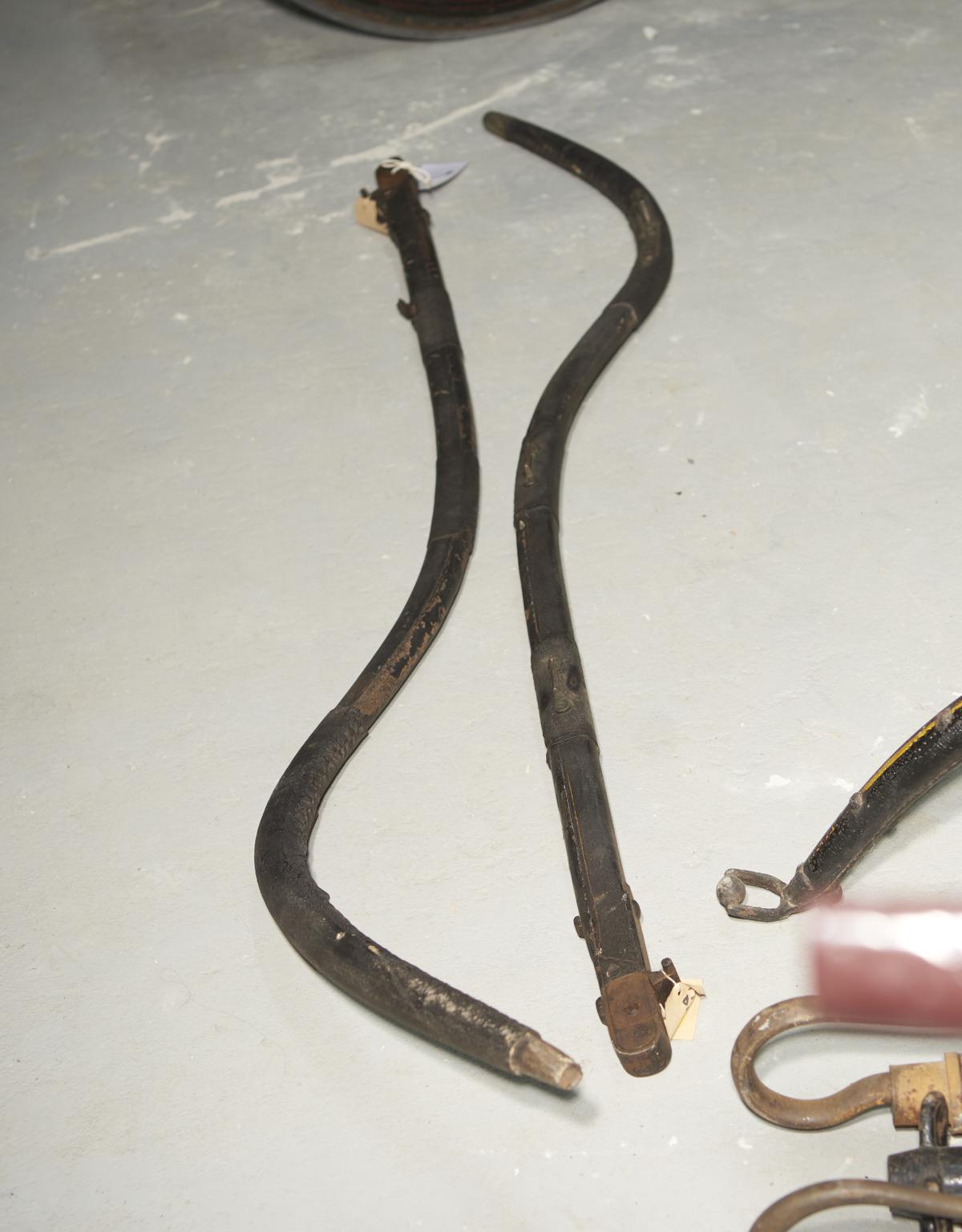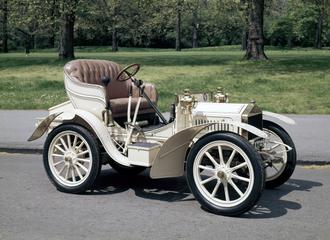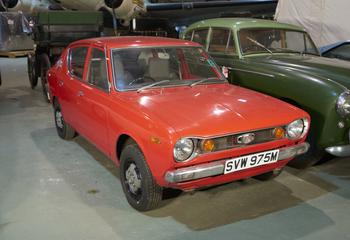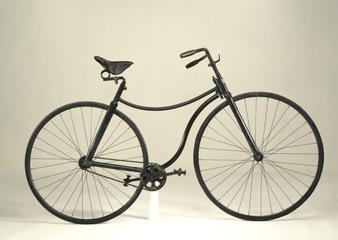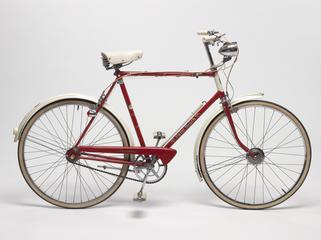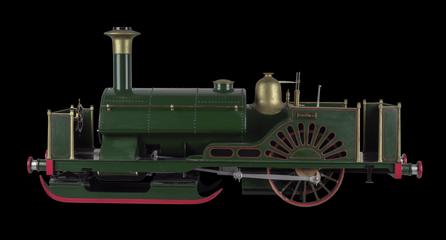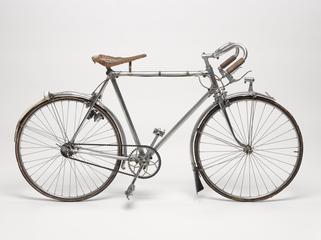Driving Phaeton
This driving phaeton was built by Parker and Parker Coachbuilders in London at an unknown date. It is a four-wheeled, open topped carriage, that fits two people in its front seats, and potentially another two passengers in its backwards facing seating. The upholstery for the seating has been removed.
The body and undercarriage, including the elliptical springs behind the front and back wheels, are black or unpainted. The carriage has a spoon brake system but the brakes themselves are currently detached and stored separately. On either side of the carriage body are mud catchers over the larger back wheels. The wheels have hub caps which are engraved “Parker & Parker, London W.C”.
More
Phaetons were one of the most popular and common types of carriages seen in Victorian society and were one of the first carriages designed explicitly to be owner-driven. Phaetons were very stylish and early motor cars adopted their likeness in their own designs, Famous examples of ‘Phaeton body’ style automobiles are the 1930 Studebaker and the Cadillac v-16.
This specific driving phaeton was built at an unknown date by Parker and Parker, a London-based Coachbuilder. It stands out among the other phaetons in this collection for its open-top and simplified body design. This combined with its smooth elliptical spring suspension, made it perfect for slow country drives, casual driving and errand running.
The driving phaeton shares a similar design to four-wheel dog carts, which are sometimes called Beaufort Phaetons or shooting phaetons. Their wider frames and open top seating made them ideal vehicles for shooting parties.
- Measurements:
-
overall: 1800 mm x 1500 mm x 2700 mm,
- Materials:
- wood (unidentified) , metal (unknown) , paint , textile , leather and rubber (unidentified)
- Object Number:
- 1938-604/1
- type:
- phaeton
- Image ©
- The Board of Trustees of the Science Museum
